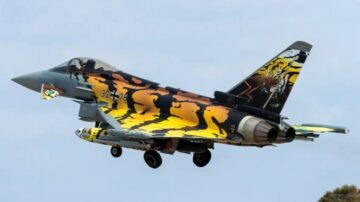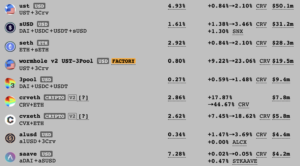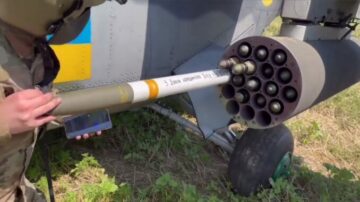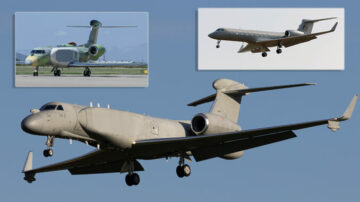
The new self-protection system is being fielded on more than 1,500 Army aircraft, after the Initial Operational Capability was reached last year.
Northrop Grumman recently delivered to the U.S. Army the 500th Common Infrared Countermeasures (CIRCM) kit, receiving in turn the fourth yearly CIRCM contract award. After the new $147 million production order, the company says it has another 336 kits on order, which would bring this technology to more than 800 aircraft in total.
Last year, when the Initial Operational Capability (IOC) was achieved, Northrop Grumman said it had delivered over 250 CIRCM systems to the Army, including the 100 that were already installed on the service’s helicopters. The company also noted that it has delivered on each commitment by providing all systems on time.
“Our latest CIRCM production award is a recognition of our continued partnership with the U.S. Army and builds on our on-time delivery momentum,” said Bob Gough, vice president of aircraft survivability, Northrop Grumman. “Since reaching full-rate CIRCM production, we have driven performance and speed in delivering on our commitments to meet the Army’s needs.”
The requirements for IOC have been reached on the UH-60M, HH-60M, CH-47F and AH-64Es, paving the way for the accelerated fielding of CIRCM systems on more than 1,500 Army aircraft. Last year it was disclosed that, since the first field installation in Dec. 2021, CIRCM accumulated more than 11,000 flight hours, while Northrop Grumman mentions that the number increased to 30,000 operational flight hours.
The Common Infrared Countermeasures system
CIRCM is a lightweight dual-jammer Directional Infrared Counter Measures (DIRCM) system designed specifically to protect rotary wing and medium fixed-wing aircraft from infrared-guided missiles. The dual-jammer configuration was chosen as it provides spherical protection and the highest level of aircraft survivability, compared to a single-head DIRCM.
Northrop Grumman says that the system is built on open architecture to work with existing hardware and uses a compact pointer/tracker, a lightweight Commercial Off-The-Shelf (COTS) processor, and advanced Quantum Cascade Laser (QCL) technology for greater reliability and scalability.

CIRCM also meets demanding size, weight and power (SWaP) requirements, to offer industry leading capability for a variety of SWaP restrictive platforms for the US and its allies. SWaP requirements are becoming more important as new aircraft carry much more electronic systems, which together are heavier and more power-hungry than in the past. Also, in the past some DIRCM systems failed to be installed in mass on helicopters because of their excessive weight.
As described by the Army, CIRCM is part of a suite of infrared countermeasures that also includes a Missile Warning System (MWS) and an Improved CounterMeasure Dispenser (ICMD) for flares and chaff. The Army’s current MWS is the Common Missile Warning System (CMWS) with the third-generation electronic control unit (ECU), which is responsible for detecting and declaring on an IR threat. Both CIRCM and the ICMD receive the handoff from CMWS and provide appropriate countermeasures to defeat the threat.
A brief description of the CIRCM’s functioning can be found in the (unclassified) FY21 Army Aircraft Procurement Budget (Line Item Number: 5399AZ3537): “CIRCM receives an angular bearing handoff from the MWS, employs a pointing and tracking system which acquires the handed-over threat and tracks the incoming missile during and after motor burnout. CIRCM jams the missile by using modulated laser energy in the missile seeker band, thus degrading the tracking capability of the missile and causing it to miss the aircraft.”
The Army’s current MWS is the Common Missile Warning System (CMWS) with the third-generation electronic control unit (ECU), which is responsible for detecting and declaring on an IR threat.
CIRCM, however, does not require a specific MWS system and is able to work with many different sensors, according to the operational requirements.
- SEO Powered Content & PR Distribution. Get Amplified Today.
- PlatoData.Network Vertical Generative Ai. Empower Yourself. Access Here.
- PlatoAiStream. Web3 Intelligence. Knowledge Amplified. Access Here.
- PlatoESG. Carbon, CleanTech, Energy, Environment, Solar, Waste Management. Access Here.
- PlatoHealth. Biotech and Clinical Trials Intelligence. Access Here.
- Source: https://theaviationist.com/2024/06/06/ng-delivers-500th-circm-kit-us-army/
- :has
- :is
- :not
- 000
- 1
- 100
- 11
- 125
- 2021
- 250
- 30
- 500
- 800
- a
- Able
- accelerated
- According
- Accumulated
- Achieve
- Acquires
- advanced
- Aerospace
- aerospace engineering
- After
- aircraft
- All
- already
- also
- alt
- among
- an
- and
- Angular
- Apache
- applied
- appropriate
- architecture
- ARE
- areas
- Army
- AS
- avatar
- award
- BAND
- based
- BE
- because
- becoming
- been
- being
- bob
- both
- bring
- budget
- builds
- built
- burnout
- by
- CAN
- capability
- carry
- cascade
- causing
- chosen
- commercial
- commitment
- commitments
- Common
- compact
- company
- compared
- Configuration
- conflicts
- continued
- contract
- contributor
- control
- Counter
- credit
- Current
- Degree
- delivered
- delivering
- delivers
- delivery
- demanding
- described
- description
- designed
- detecting
- different
- does
- driven
- during
- each
- Electronic
- employs
- energy
- Engineering
- equipped
- evolution
- excessive
- existing
- expertise
- Failed
- far
- field
- First
- flight
- For
- found
- Fourth
- freelance
- from
- functioning
- graduate
- greater
- had
- Hardware
- Have
- he
- helicopter
- helicopters
- highest
- his
- HOURS
- However
- HTTPS
- image
- important
- improved
- in
- includes
- Including
- Incoming
- increased
- industry
- initial
- installation
- installed
- IT
- Italy
- ITS
- jams
- journalist
- jpg
- kit
- laser
- Last
- Last Year
- latest
- leading
- Level
- lightweight
- Line
- many
- Mass
- master
- max-width
- medium
- Meet
- Meets
- mentions
- Military
- million
- miss
- missiles
- Momentum
- more
- Motor
- much
- needs
- New
- noted
- number
- of
- offer
- on
- open
- operational
- Operations
- order
- osint
- our
- over
- part
- Partnership
- past
- Paving
- performance
- photo
- Platforms
- plato
- Plato Data Intelligence
- PlatoData
- power
- president
- Processor
- procurement
- Production
- protect
- protection
- provide
- provides
- providing
- Quantum
- reached
- reaching
- receive
- receives
- receiving
- recently
- recognition
- Red
- reliability
- require
- Requirements
- responsible
- Restrictive
- right
- s
- Said
- says
- Scalability
- sensors
- since
- Size
- some
- specific
- specifically
- speed
- Studying
- suite
- swap
- system
- Systems
- techniques
- Technology
- than
- that
- The
- the world
- their
- this
- threat
- throughout
- Thus
- time
- to
- together
- Total
- Tracking
- tracks
- TURN
- u.s.
- unit
- us
- us army
- uses
- using
- variety
- vice
- Vice President
- visible
- warning
- was
- Way..
- we
- webp
- weight
- were
- which
- while
- Wing
- with
- Work
- world
- would
- year
- yearly
- years
- zephyrnet











